The Power of Rotations
Well thought out crop rotations are the most powerful tool in any farmers toolbox and can drastically limit the amount of inputs required. This is due to a good rotation's ability to control pests and diseases in a natural way.
Well thought out rotations require a lot of planning, agronomic skill, and discipline. You can't simply change crops because the market will give you $5 more per acre or your rotation could be changed for the worse and it will cost you $10 in the future. Rotations are a long term commitment.
We strive for a minimum of 4 year rotations and are currently moving towards even longer rotations. The more crops in a rotation the higher degree of agronomic and marketing skills are required. Rotations are worth the effort as they increase our sustainability. To learn more about each of the field crops we grow keep reading.
A well planned rotation will reduce our reliance on pesticides and fertilizer due to:
- Reducing disease pressure in the field
- Reducing weed pressure in the field
- Limiting the movement and build up of insect pests
- Better ability to feed the soil biology
Using Multiple Crops to Provide Biological Solutions to Biological Problems
We are firm believers that many of the problems in Canadian agriculture are caused by a lack of diversity in crop rotations. Proper long term rotations have the ability to drastically reduce our reliance on synthetic inputs. By reducing insect and disease pressure while helping to provide some of the nutrients plants need naturally. When we have an agronomic problem we do our best to ask ourselves "What rotational or biological thing did we do wrong?" before we ask we seek a chemical solution to fix the problem.
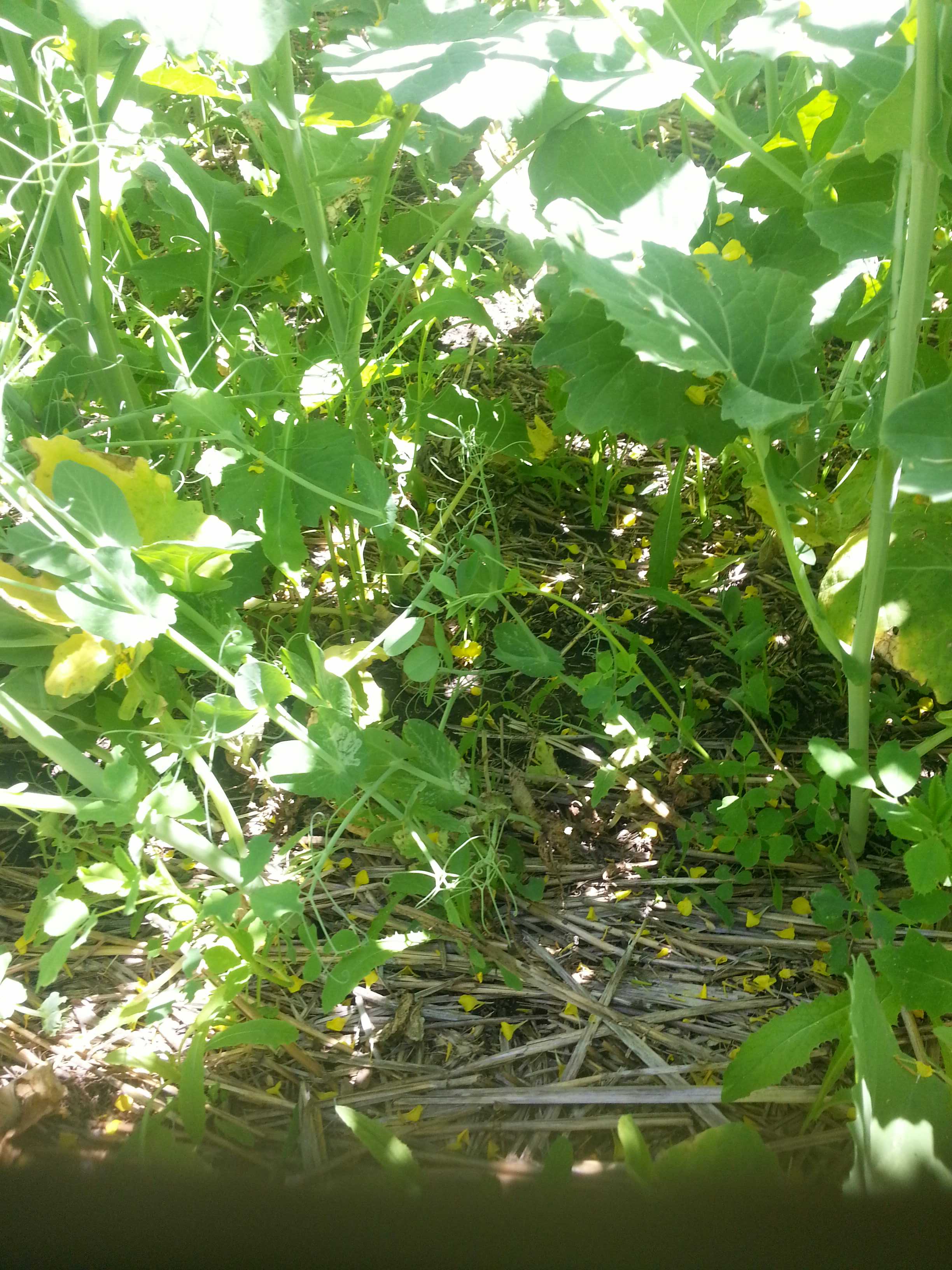
Forages
As we are involved the hay, cattle and annual cropping we are able to grow and utilize a wide variety of both perennial and annual forages under both dryland and irrigation. Large amounts of forages are consumed by our cattle and some is harvested for hay which is sold or fed to our cattle.
Yellow Field Peas
Field peas are a staple in our rotation, being a legume they provide the soil with nitrogen by forming a symbiotic relationship with rhizobia which fix nitrogen from the atmosphere. this reduces our reliance on synthetic nitrogen produced from fossil fuels. While at the same time providing a protein rich product that is shipped primarily to the Middle East and India.
Canola
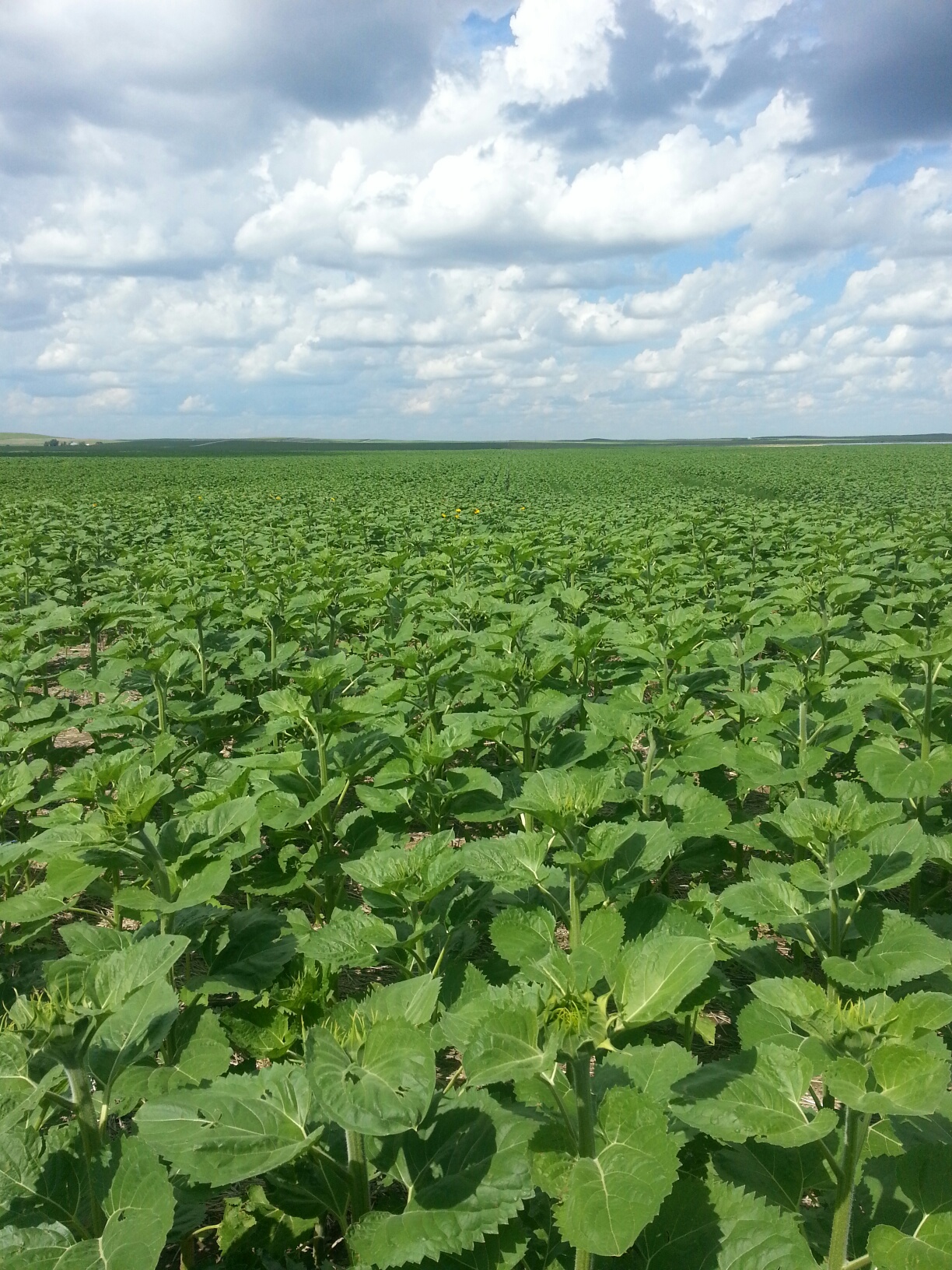
A staple in many rotations in the area, canola is a Canadian success story, by breeding out the undesirable characteristics in rapeseed, canola was born in Canada. Canola is if often the crop of choice in the region. Due to the lack of soil microbiological activity that canola stimulates and diseases that are present affecting the plant if grown too often, we grow canola only once in four years or more on the same piece of land.
Hard Red Winter Wheat
One of the few fall seeded crops that has been proven to survive the winter in the region. Winter wheat is admittedly one our agronomy departments favourite crops. Planted in the fall winter wheat over winters and is harvested 12-13 months after planting in September or October. Generally lower protein than the more common Hard Red Spring Wheat. Winter wheat is a challenge to market but this is offset by the fact that the crop breaks weed and pest cycles by growing at a different time than spring seeded crops. Drought resistance and yield potential are also greater due to winter wheat being off to an earlier start in the spring.
Hard Red Spring Wheat
The crop that made the Canadian prairies famous, we have been growing wheat in Canada for five generations and find that we love growing this crop.
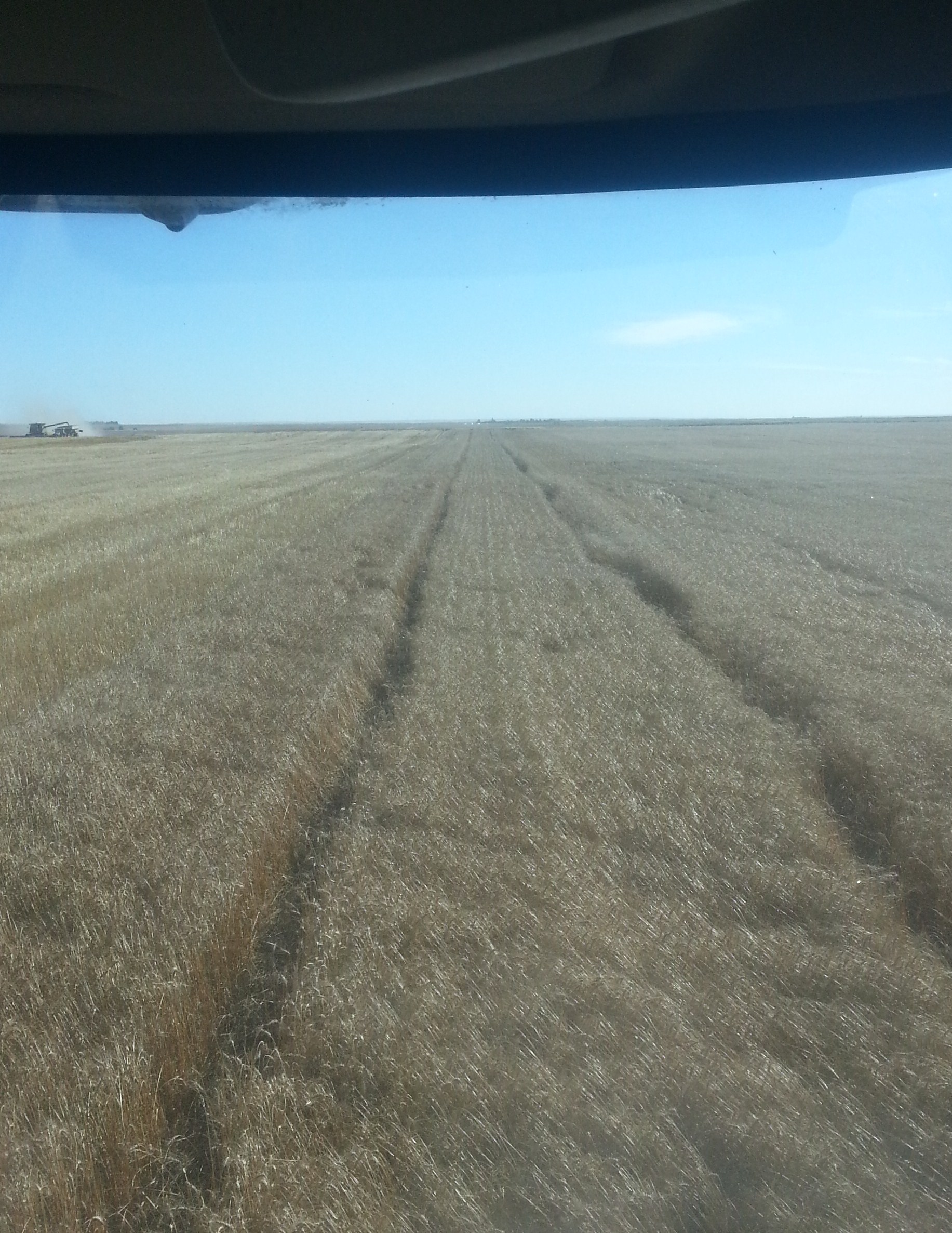
Minor Crops We Grow
Barley
Although a staple crop in the region, Lamb Farms does not grow a lot of barley as we have chosen to focus our efforts on a crop we deeply love, wheat! That said we have been know to grow this crop on a small scale from time to time under irrigation where we can harvest it for grain or forage to feed to our cows.
Flax
A staple on the farm for Stan, flax has become a minor crop on the farm but is still valued due to its uniqueness from every other crop on the farm and its ability to nurture the soil mycorrhiza makes this crop a natural fit for the farm.
Oats
Primarily used as a forage, and cover crop to feed our cattle we have been known to harvest this crop for grain when the conditions are right.
Lentils and Chickpeas
Always looking for more legume (nitrogen fixing) crops Lamb Farms has grown both chickpeas and lentils in the past but the growing season seems to be a little short for lentils and chickpeas have proven to be somewhat disease prone, so have not been grown for a number of years.
Sunflowers
A newer crop for Lamb Farms Sunflowers are extremely deep rooted bringing up nutrients that would otherwise be lost. They are unlike any other plant we grow increasing the diversity in our rotations. Sunflowers have high heat requirements, we are finding that newer short season varieties seem to fit into our rotation.
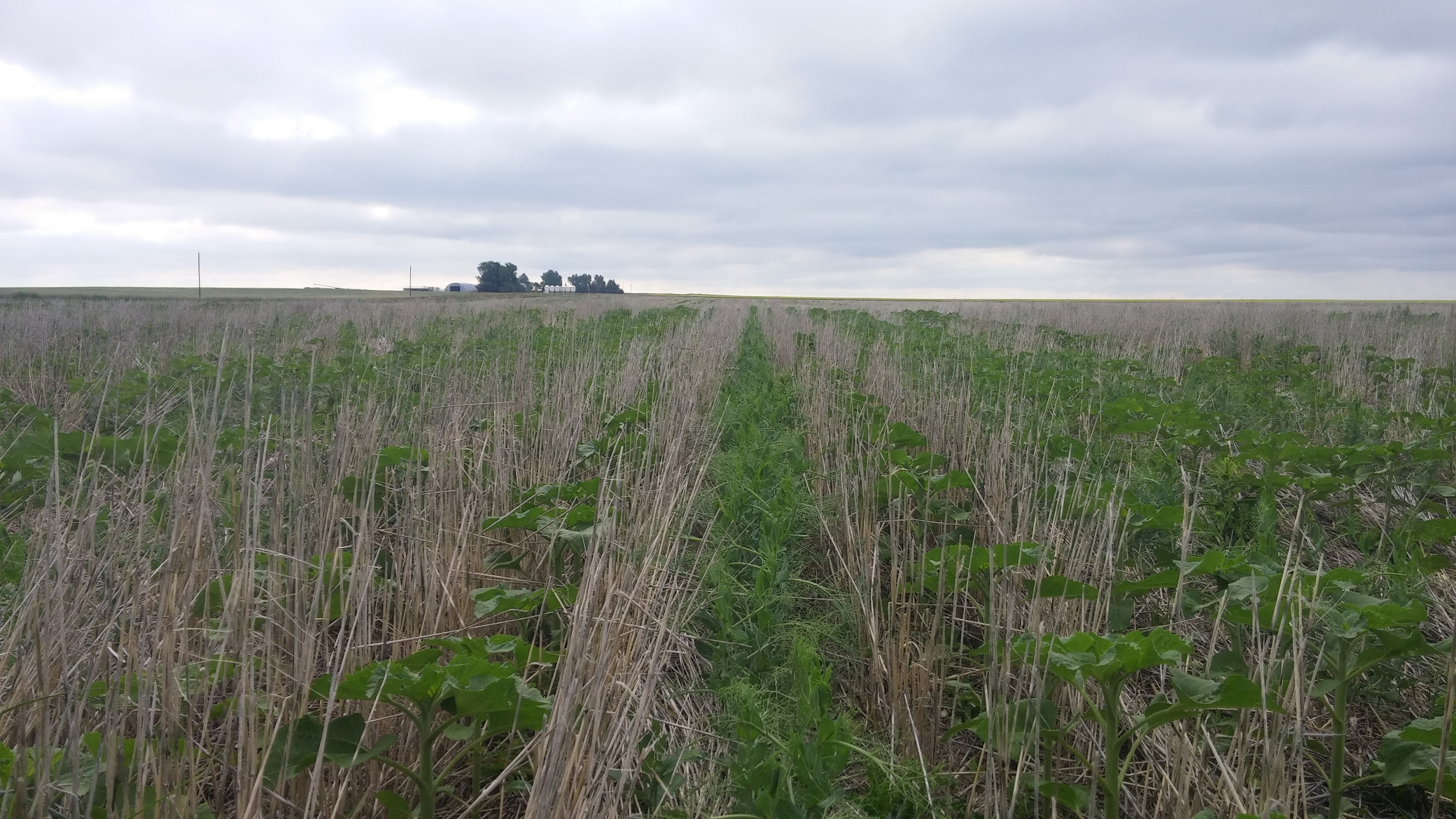
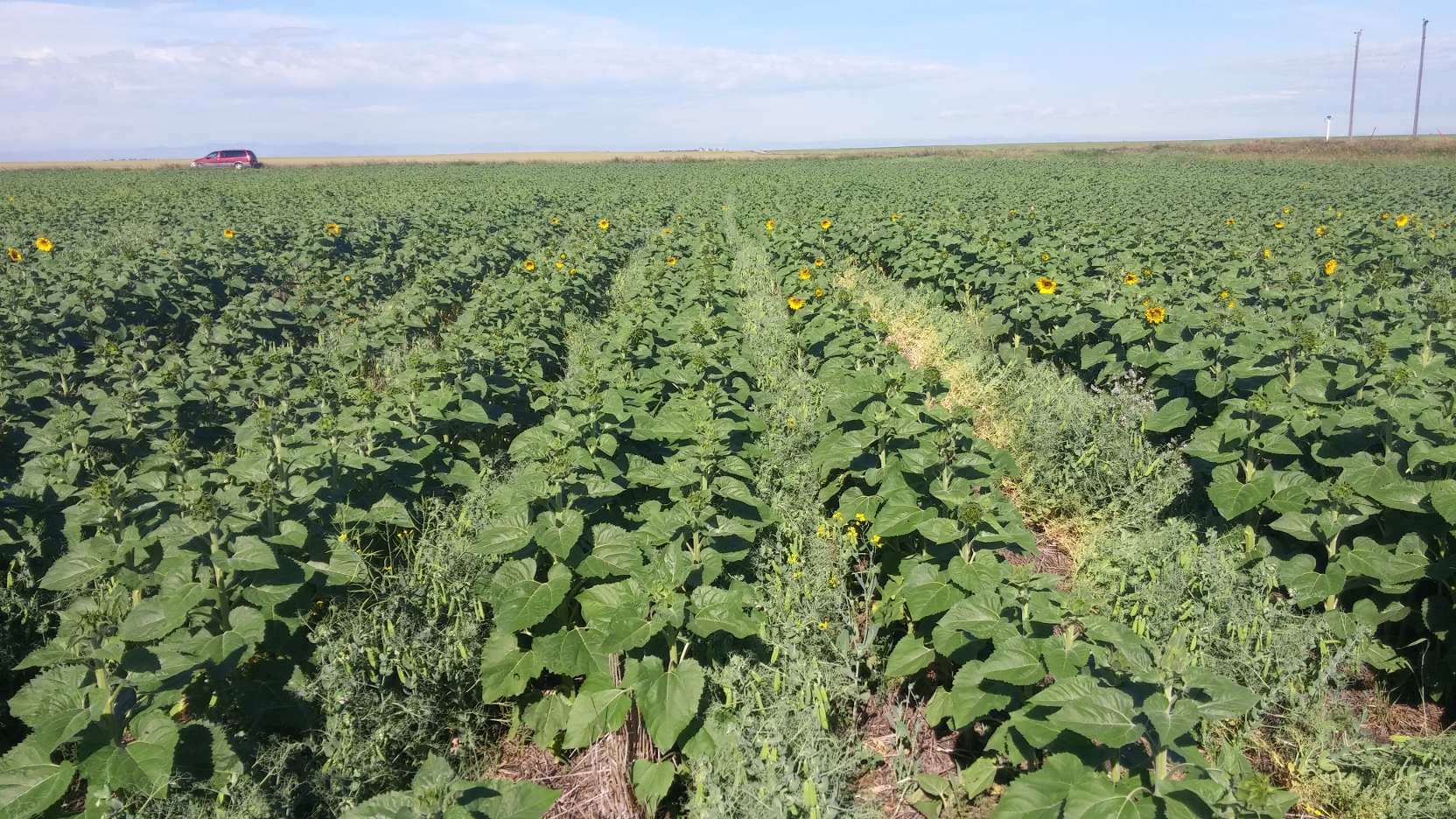
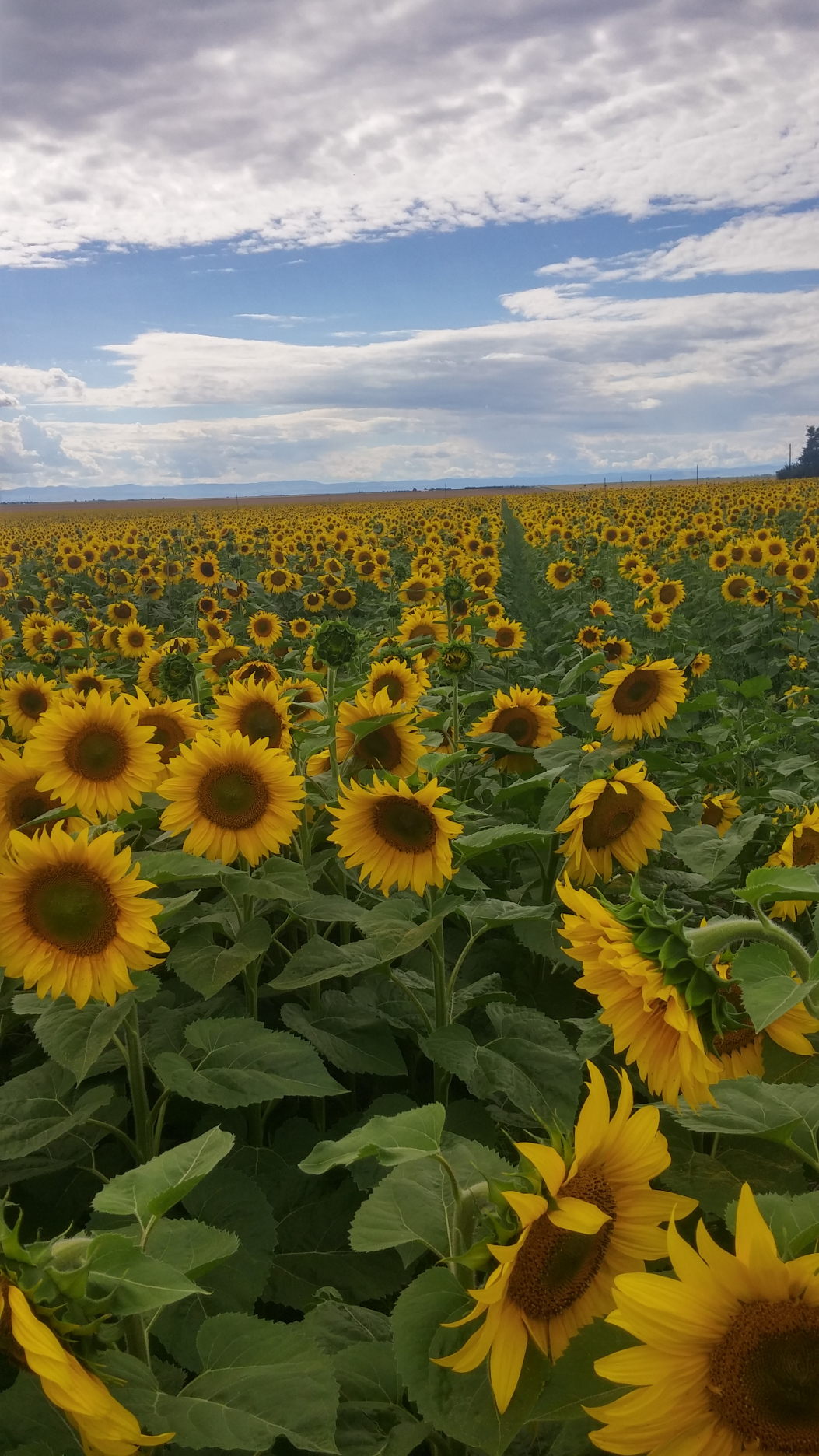
Hemp
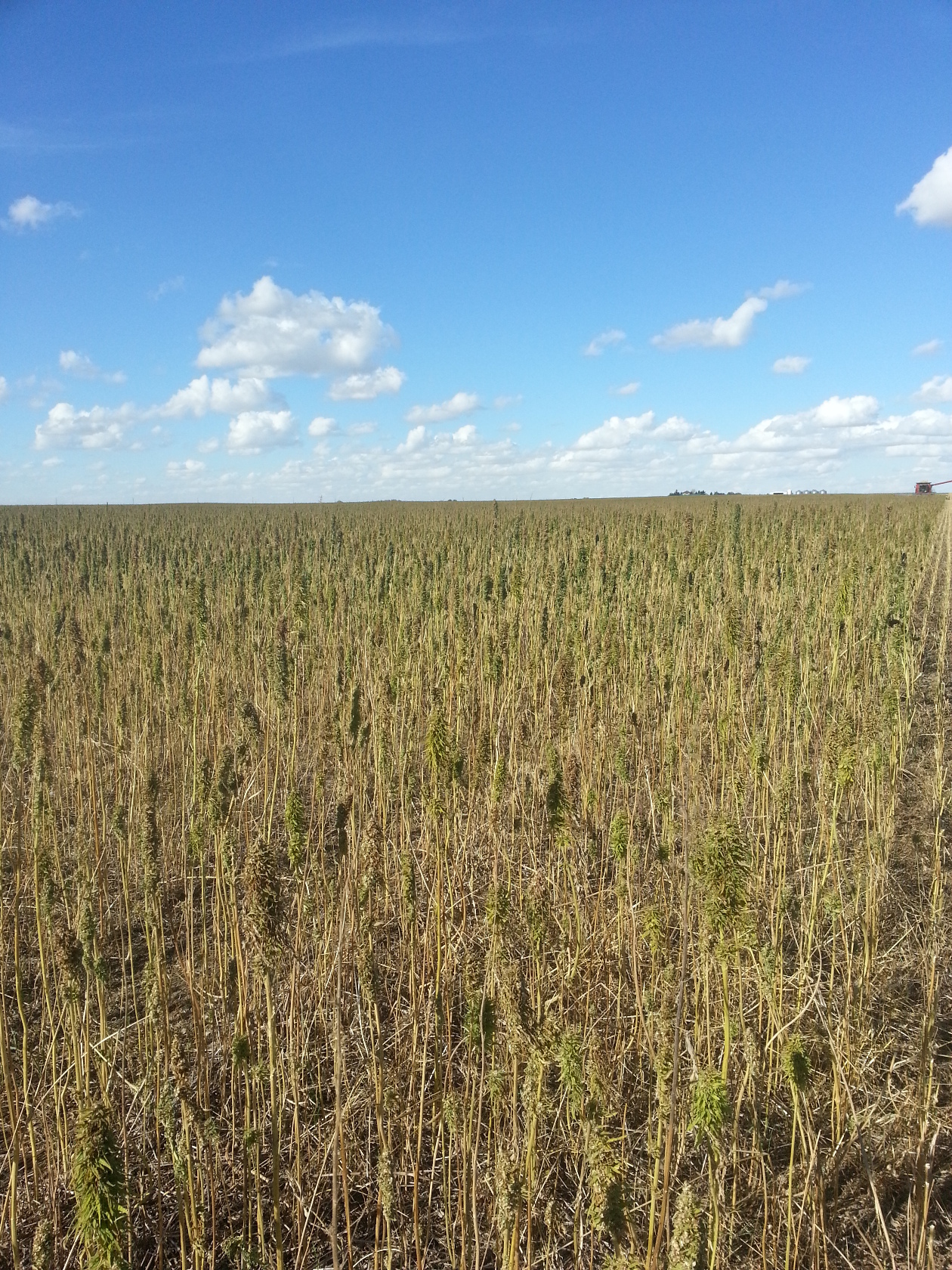
One of the more interesting crops we grow. A relatively new crop to Alberta hemp presents unique challenges and opportunities, hard to harvest, and most importantly market, hemp is great for adding diversity into our rotations as it is unique from every other crop we grow.
Intercrops & Companion Cropping
We are starting to experiment with intercrops (seeding and growing two different annual crop species together) in an effort to grow more biomass per hectare and to reduce our pesticide use while improving soil health. This ties in with many of the goals we are trying to accomplish with cover cropping.

Cover Cropping
Cover cropping is not a new concept, although it seems to be on its way to becoming repopularized. We have been cover cropping in various forms for as long as we can remember; we are working hard to integrate cover crops and cover cropping principles into our agronomic system. We believe if done correctly integrating cover crops will take our no-till system to the next level.
If done correctly cover cropping should provide the following long term benefits:
- Provides more diversity in the cropping system
- Provides a more encouraging environment for beneficial insects
- Creates an environment that makes it hard for weeds to thrive limiting the need for herbicides,
- Creates an environment that promotes the ecosystems natural disease, and insect checks and balances, reducing the need for fungicides and insecticides.
- Keeps soil from leaking nutrients below the rootzone a some deep rooted covers can also bring up nutrients that would otherwise be lost to the water table.
In general many of the things that cover crops can do can be done with well planned and long term crop rotations; the goal is to use cover crops to create a more stable system and accomplish the goals and benefits we wish to achieve faster.
Cover crops are becoming especially popular in the United States corn belt, this is due to a few factors:
- Higher moisture environment excess moisture can be an issue.
- Lots of potential growing days after harvest of their crops.
- General lack of diversity in many corn belt rotations.
- Some direct financial compensation is available (Maryland offers $74- $140 per hectare).
- Lots of research and extension is done at the governmental level.
In Southern Alberta conditions are somewhat different and integrating cover crops in our conditions presents a few challenges:
- Moisture is generally limited.
- Very few frost free growing days after harvest.
- Integration with our diverse rotations can be challenging as some cover crop species can interfere with carefully engineered disease, insect, and weeds breaks.
- No direct financial compensation .
- Lack of research and extension in our conditions leaving us to figure it out on our own.
There are 3 types of cover crops all of which are being experimented with and utilized so some extent on the farm.
- Cover Crop: anything planted after the harvest of a main cash crop.
- Intercrop: two species of plants planted at the same time to be harvested in the same season; one or both may or may not be cash crops.
- Relay cover: when another species is added to a crop mix after emergence but before harvest of the primary cash crop.
While integrating cover crops into our system is a long term goal it is admittedly a work in progress; many plant species and seeding methods have been tried with a various degrees of success it is a long term work in progress and we hope to stay on the leading edge of the cover crop movement in Southern Alberta.
And many other experimental crops on a small scale.